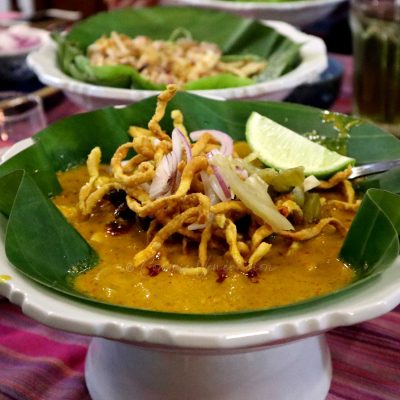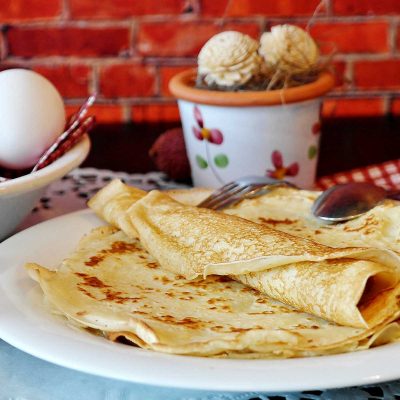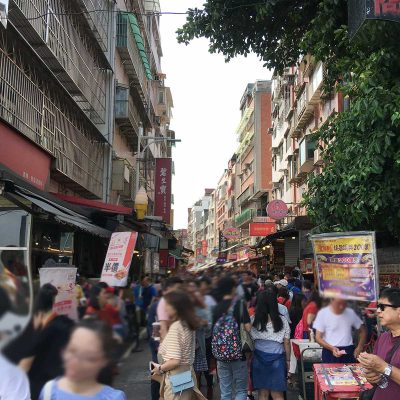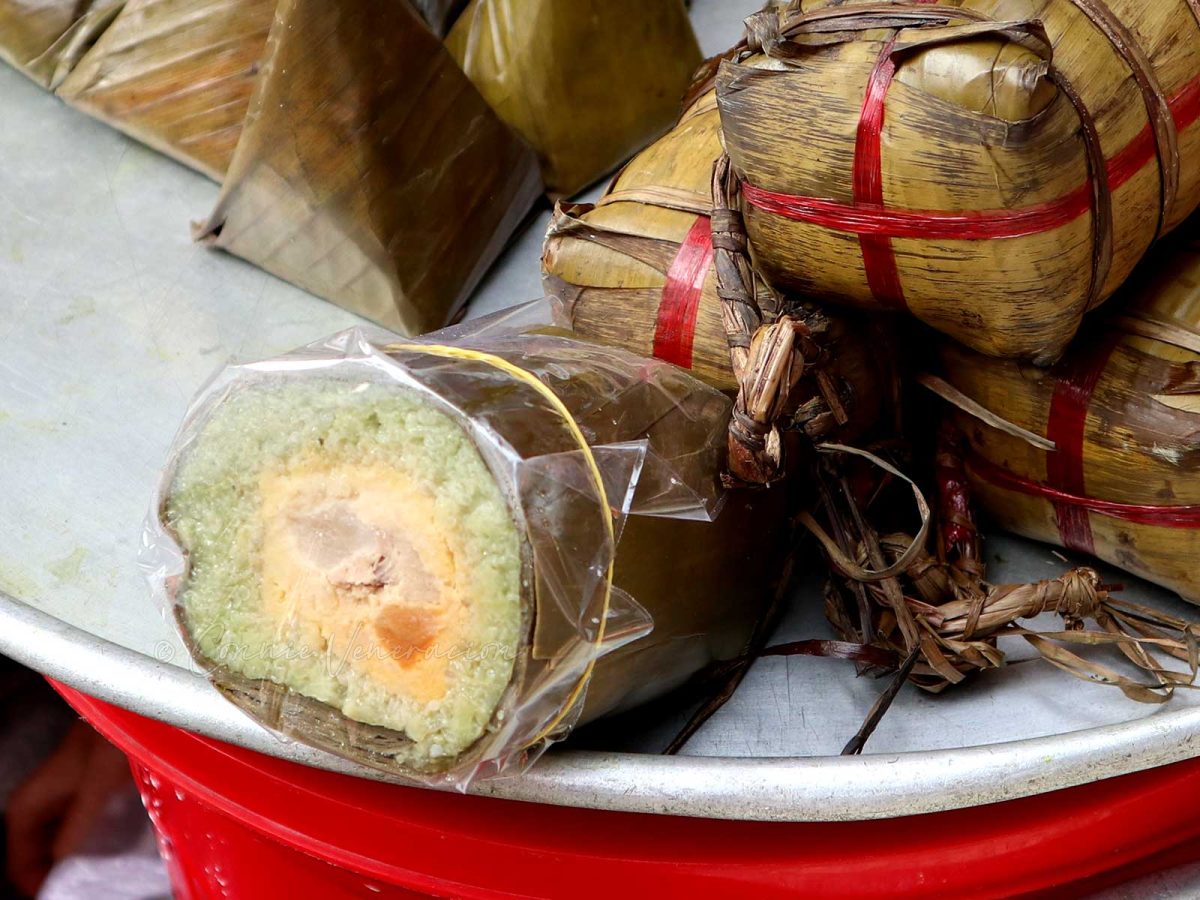
At the Cu Chi Market, on the way to a cooking class, I saw banh tet and bought a small portion — not a whole log because that would have been too much for myself and my daughter, Alex.
Our guide (and cooking instructor, it turned out later) looked surprised at the interest I showed for banh tet. She started to explain that it was usually served during the Lunar New Year celebration. I said that was why I was particularly interested in it. It’s an iconic Vietnamese dish which, to me, means something that shouldn’t be missed.
We wouldn’t get to try the banh tet until much later that day at the apartment. And it was everything that I thought it would be. Aromatic, savory and utterly lovely.
What is banh tet?
It’s a savory rice dish served in slices. Banana leaves are lined with glutinous rice, mung beans, soaked to soften, and pork belly are spread on the rice and everything is rolled tightly into a log. The log is wrapped in more banana leaves then tied to seal everything in place.
Then, the package is boiled for six hours or longer. The multiple layers of banana leaves ensure that the water does not directly touch the rice and everything in its core.
Yes, the entire process is time consuming and labor intensive. Most special occasion dishes are. That’s why banh tet is cooked in large batches with several logs boiling at the same time in an oversized pot.
Why is banh tet eaten during the Lunar New Year?
Some say it has to with the significance of rice in Vietnamese culture. Rice is accessible to rich and poor, and since it is important to have a symbol of abundance when ringing in the new year, banh tet (and its sibling, banh chung) became an important dish to serve and consume.
Is making banh tet at home a doable project?
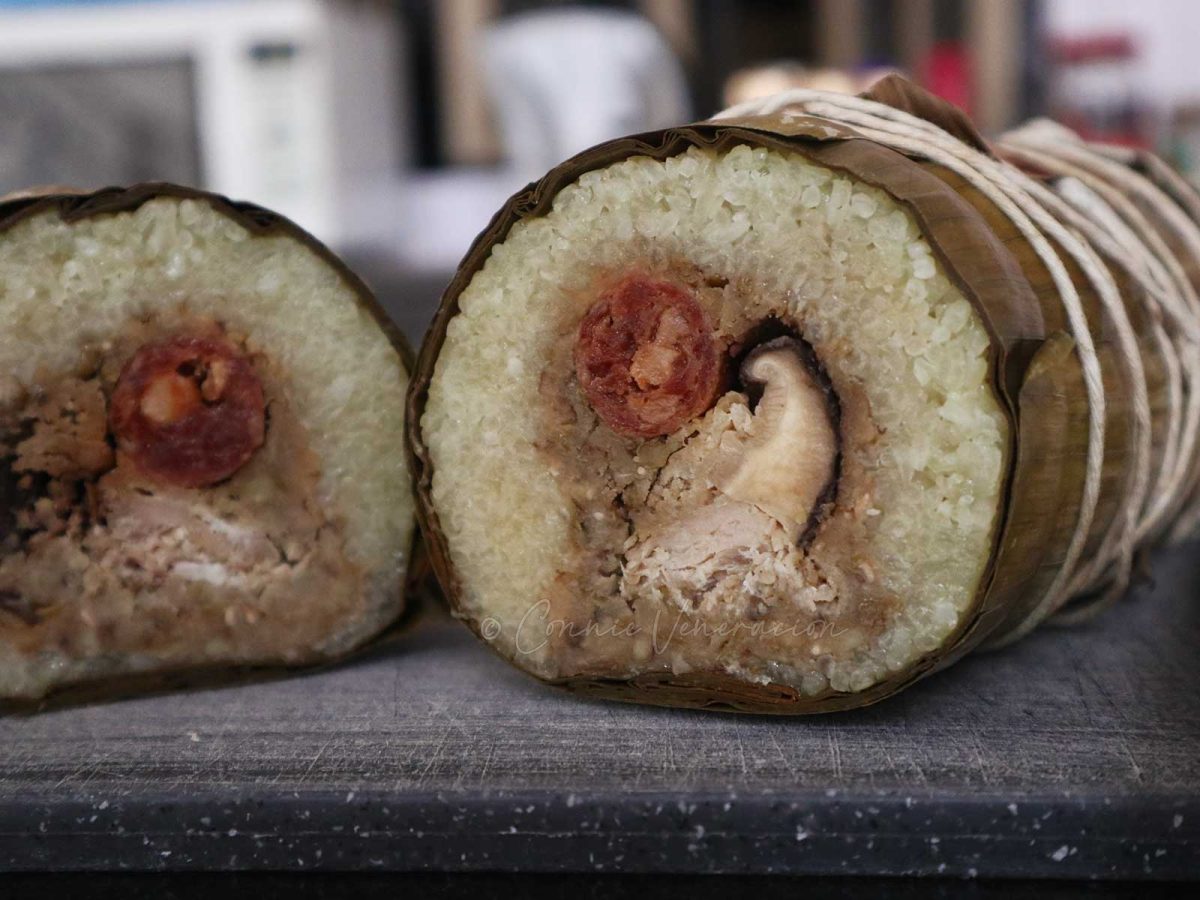
My daughter, Alex, tried it. She is so game with experiments like this. We had all the ingredients (had to swap green for the more traditional yellow mung beans though) and she even added sausage and mushrooms to the pork and mung bean filling.
The instructions she found online (there aren’t too many English intructions for making banh tet, as you can imagine) said four hours of boiling was sufficient but to make sure that the banh tet was completely submerged in water throughout the cooking time.
The pot that Alex used just wasn’t tall enough (it’s the largest one we have) as it only allowed the banh tet to be covered by an inch of water. Every 15 minutes or so, as the water evaporated, the water level dropped and the top of the banh tet was exposed.
We did replenish the water as often as we could. But, apparently, four hours of cooking was too short to cook all the rice grains through. Some grains were still hard at the core. Not many but enough to be noticeable. And the rice had even been pre-soaked for a day to allow the grains to cook faster.
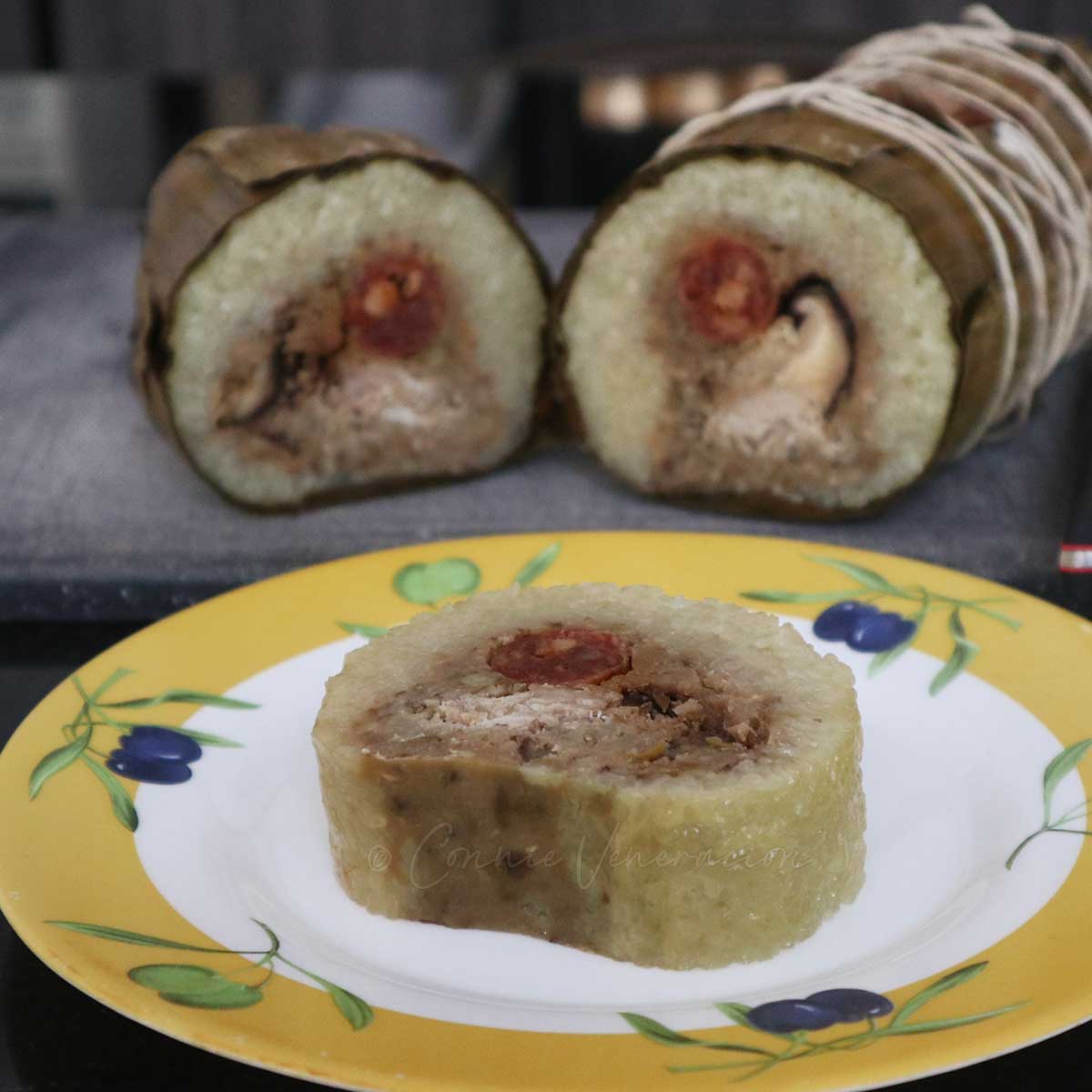
But who’s complaining, really? Alex’s banh tet was good. When I mentioned that the rice was soaked in water prior to cooking, I meant Alex soaked the rice in pandan water. The aroma was wonderful. The addition of Chinese sausage and mushrooms, although not traditional, added such depth of flavor.
Alex wants to repeat the experiment, naturally. We’ll have to get a larger and taller pot for that.

